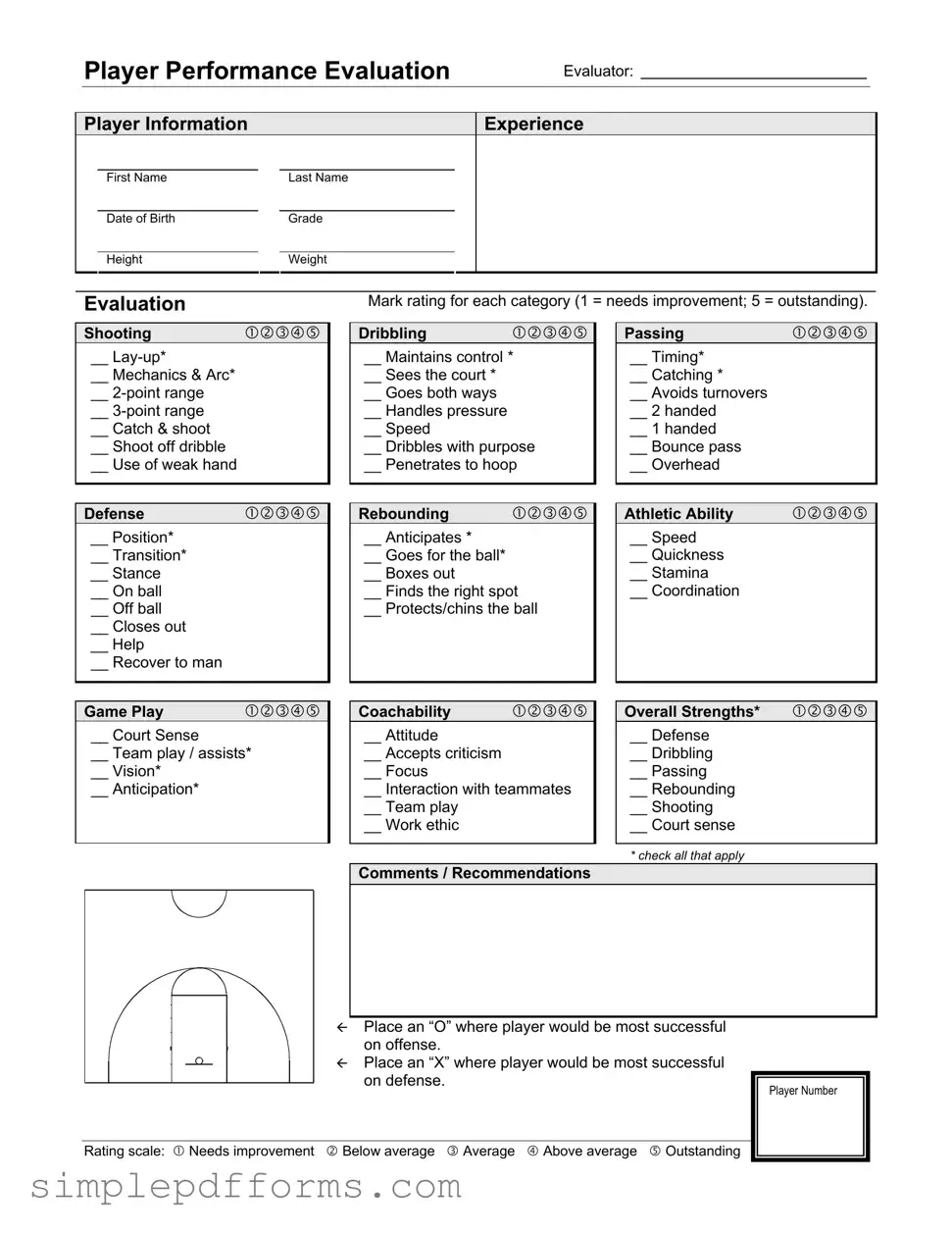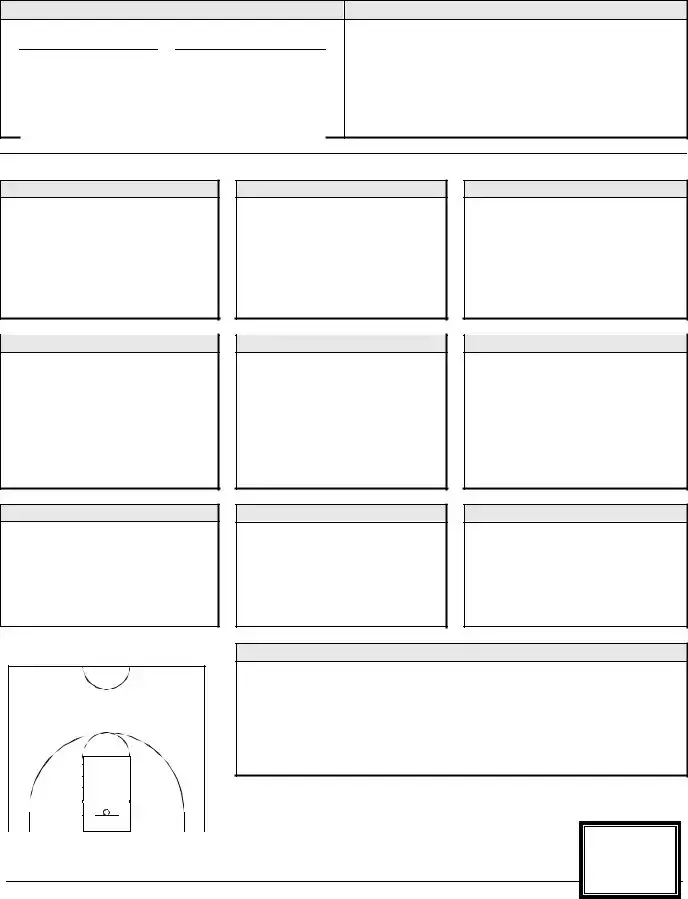Filling out the Basketball Evaluation form can be a straightforward process, but several common mistakes can lead to inaccurate assessments. One frequent error is failing to provide complete player information. Missing details such as the player's first name, last name, or date of birth can create confusion and hinder the evaluation process. It’s essential to ensure that all fields are filled out accurately to facilitate effective communication and record-keeping.
Another mistake often made is neglecting to use the rating scale consistently. Evaluators may mark some categories without adhering to the scale of 1 to 5, which can result in a misleading evaluation. For instance, if one category is rated as a 4 but another is marked with a vague descriptor like "average," it becomes challenging to compare performance across different skills. Keeping the rating consistent helps in providing a clearer picture of the player's abilities.
In addition, evaluators sometimes overlook the importance of specific feedback in the comments section. While it’s easy to check boxes for various skills, providing qualitative insights is crucial. Comments can highlight a player’s unique strengths or areas for improvement that numbers alone cannot convey. Without this commentary, the evaluation may lack depth and fail to offer valuable guidance for the player's development.
Moreover, some evaluators forget to assess all relevant categories. Skipping sections such as "Defense" or "Passing" can lead to an incomplete evaluation. Each area contributes to the overall assessment of a player's performance. To ensure a comprehensive evaluation, take the time to consider each category and provide ratings and comments where applicable.
Lastly, a common oversight is not placing the "O" and "X" markers correctly on the form. These indicators are crucial for identifying the player’s strengths on offense and defense. Misplacing these markers can lead to misunderstandings about where the player excels or struggles. Clear and accurate placement of these symbols provides essential insights into the player’s capabilities and potential positioning on the court.

